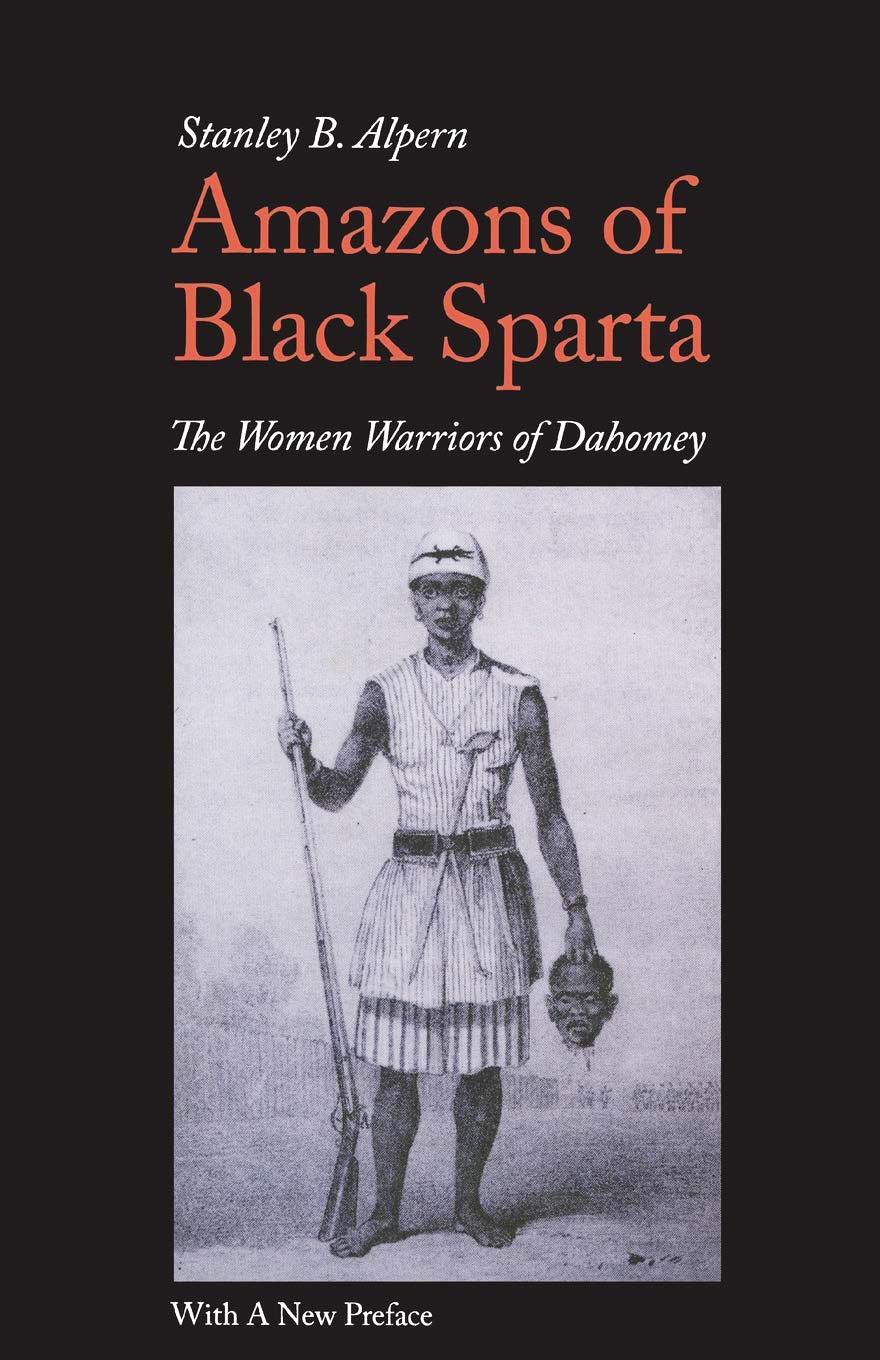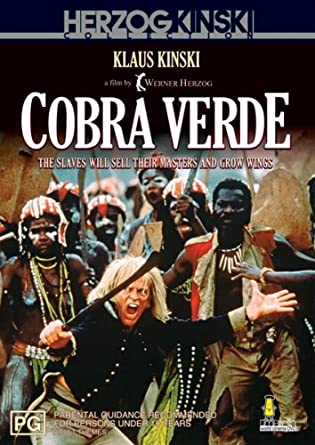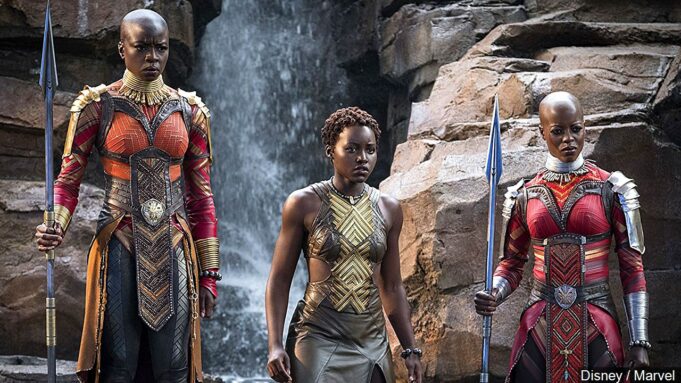No story about Africa’s kingdom of Dahomey, now the Republic of Benin, would be complete without chronicling the history of their fearless female warriors.

In fact, in the history of the world these fearless women warriors called “Agojie” or Dahomey Amazons by the French literally left European colonialists “shaking in theirs boots.”
The Agojie warriors are called the only documented frontline female soldiers in modern warfare history.
Their last enemies, the French, were full of praise for their courage, according to the smithsonianmag.com. “A French Foreign Legionnaire named Bern lauded them as ‘warrioresses … fight with extreme valor, always ahead of the other troops. They are outstandingly brave … well trained for combat and very disciplined.’ A French Marine, Henri Morienval, thought them ‘remarkable for their courage and their ferocity … flung themselves on our bayonets with prodigious bravery.’”
In addition, it was their fierceness that most unnerved “Western observers, and indeed Dahomey’s African enemies.”
The French agreed the Agojie “excelled at hand-to-hand combat” and “handled admirably.”
Last year, it was announced that Lupita Nyongo’o would be playing alongside Viola Davis in the film “The Woman King,” a film detailing the lives of the Dahomey female soldiers. Nyongo’o previously announced in 2019 that she would be the star presenter of a documentary focused on the Agojie.
The story to be told by the Oscar-winning Nyongo’o, reported the Guardian, is like something out of a Hollywood blockbuster movie. “Specifically, the 2018 blockbuster Black Panther, in which Nyong’o starred as Nakia, a spy for Wakanda’s Afro-futurist, all female army the Dora Milaje.” In addition to the Black Panther film the Dahomey warriors were represented in the 1987 film “Cobra Verde,” and in the 2020 HBO series “Lovecraft Country.”

According to the Guardian, between the 17th and 19th centuries, “the Dora Milaje had a real-life equivalent: the Agojie, from the Kingdom of Dahomey in present day Benin.” In a 2019 edition of Deadline, Nyongo’o was commissioned by British broadcaster Channel 4 to journey across Benin to uncover the history of these West African women warriors.
“These armies of up to 4,000 (the numbers at their height were higher according to the Smithsonian) women, fought African and European powers from the 17th to the 19th centuries in the Kingdom of Dahomey, not too dissimilar to Marvel’s Black Panther story.”
The documentary was produced by SandStone Global Productions, which has engaged in projects about Africa in the past, including “The Nile: Egypt’s Great River and Egypt’s Greatest Treasures.” “Nyongo’o’s investigation into the real story of the all female (warriors) is thrilling, haunting and emotional,”
said Shaminder Nahal, Channel 4’s Commissioning Editor, Arts and Topical Specialist Factual, reported Deadline. “It’s amazing the true story of these kick-ass female fighters isn’t more widely known—and in telling it, the film challenges dominant narratives about race, women and power, with some surprises along the way.”
The Agojie were frontline troops in the kingdom of Dahomey, “an empire in West Africa that existed from 1625 to 1894. Its remnants lie in modern day Benin. Whether fighting neighboring tribes or fighting against European soldiers, the Agojie were known for their ruthlessness and fearlessness, according to thebestofAfrica.org.
Recruiting females into the kingdom’s army wasn’t, according to smithsonianmag.org, difficult, though the requirements included extensive training. Included in the training were developing survival skills in the wild with limited rations, overcoming pain by climbing over obstacles like prickly thorn hedges, intensive hand-to-hand combat amongst themselves, and risking life and limb in battle. “Their disregard and tolerance for pain and death was tested as part of their initiation process,” noted thebestofafrica.org.
Most women lived with limited means. King Gezo’s female troops lived in his compound and were kept well supplied. According to Sir Richard Burton, who visited Dahomey in the 1860s, “when amazons walked out of the palace, they were preceded by a slave girl carrying a bell. The sound told every male to get out of their path, retire a certain distance, and look the other way.” To even touch these celibate women warriors meant death.
The first women warriors, noted theculturetrip.com, were said to have been started by the third King of Dahomey, King Houegbadja, who ruled from 1645 until 1685. These warriors were said to have been made up of hunters known as gbeto, they were later comprised of the ahosi and slaves from conquests on neighboring villages and tribes.
By the time of King Houegbadja’s son, King Agaja, who reigned from 1708 until 1732, the Dahomey warriors were established as bodyguards armed with muskets and were used as militia to defeat neighboring kingdoms. Later, King Ghezo (ruling from 1818 until 1858) initiated this even further, placing great importance on the army by increasing its budget and formalizing its structure from ceremonial to a serious military entity.
He did this by recruiting soldiers from foreign captives, although some were free Dahomean women. It is important to note that a number of the warriors became soldiers voluntarily, while others were involuntarily enrolled due to their husbands or fathers reporting about their behavior, according to theculturetrip.com
One of the bravest warriors among the Agojie was abducted from the Dahomey Empire and transported to Haiti.
Before Adbaraya Toya’s abduction she was a soldier and member of the council of women and a healer. According to face2faceafrica.com, her high position in the kingdom as a member of the council and soldier said she was an Agojie. “The Dahomey warriors were traditionally called the N’Nonmiton, which means ‘our mothers’ in Fon, the language of the Fon people of Dahomey.”
Adbaraya’s abduction may have been during a battle or raid and she was sold into slavery in Haiti. She was given the name Victoria, a name which means to conquer, suggesting her roots as a Dahomey female soldier.
“Adbaraya Toya worked on the Cormier Sugar Plantation and became very close friends with Marie Elizabeth who was the mother of Jean Jacques Dessalines and entrusted her son into Adbaraya’s care before she died. Dessalines referred to her as ‘Aunty.’ She taught him the skills she had developed back in Dahomey such as hand-to-hand combat and how to throw a knife as well as physical maneuvers to defend himself in battle.
“Her training helped Dessalines rise among the enslaved on the plantation and eventually made him join the 1791 slave rebellion,” according to face2faceafrica.
And after she gained her freedom she helped train and helped lead Dessalines’s troops to victory. In fact, Dessalines made Adbaraya “the leader of the military.”
“In her last battle, it is said that she fought off three soldiers and was severely wounded. Adbaraya lived long enough to witness Jean Jacques proclaim Haiti’s independence” and lived in Dessalines house where she passed away in 1805.
After her death a state funeral was held in her honor and she was celebrated as the mother of Haiti’s independence.
Follow @jehronmuhammad on Twitter.













